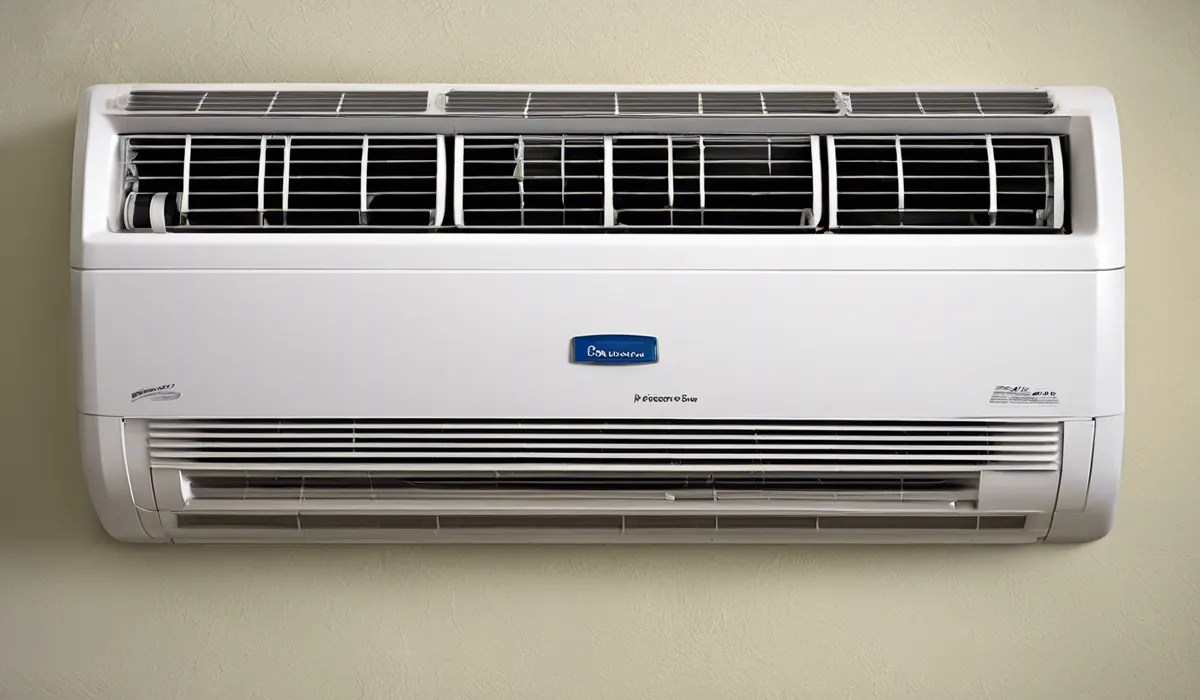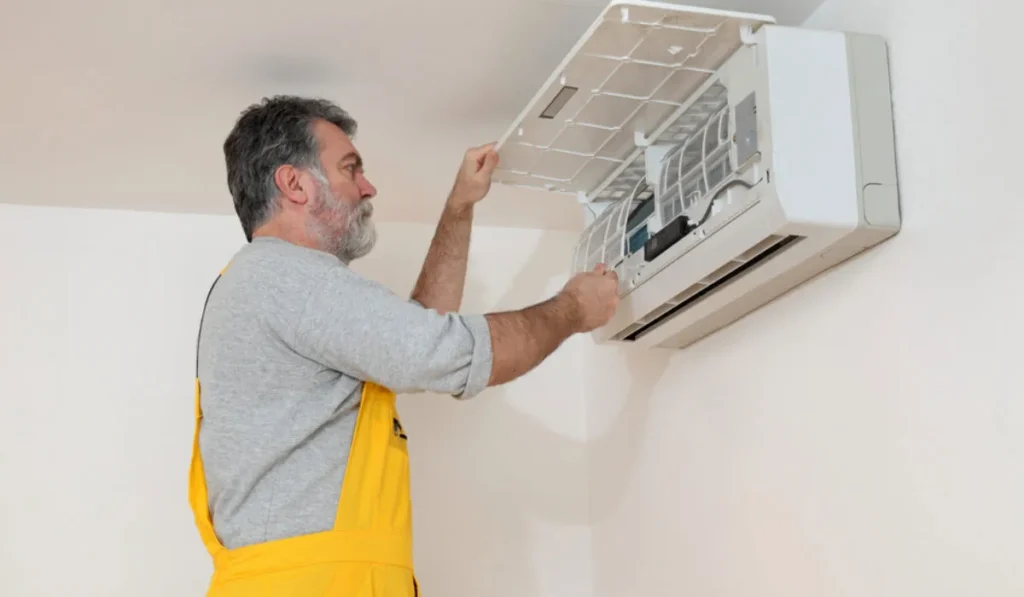Vinegar can kill some types of mold in air conditioners. To use, mix equal parts water and white vinegar, spray on affected areas, and let sit for an hour before wiping clean. However, for large infestations or certain mold species, professional cleaning may be necessary.
Understanding Mold in Air Conditioners

Conditions for Mold Growth in AC Units
Mold thrives in environments that are moist, warm, and dark. Unfortunately, air conditioners provide these conditions, especially when they are not properly maintained.
Condensation from cooling coils creates moisture, and dust or debris can supply the necessary nutrients for mold to grow. If left unchecked, the mold can proliferate within the system.
Common Mold Types in Air Conditioning
Several mold species might inhabit an air conditioner, with some of the most common being Cladosporium, Aspergillus, and Penicillium.
Each type varies in appearance and can range from black to green to white specks. Identifying the specific type of mold can be difficult without professional testing.
Health Implications of Mold Exposure
Exposure to mold can lead to various health problems, particularly for individuals with allergies, asthma, or compromised immune systems.
Symptoms may include coughing, sneezing, headaches, and in severe cases, lung infections. It is crucial to address mold issues promptly to prevent health risks.
Detecting Mold in Air Conditioning Systems
Signs of mold in air conditioners include a musty or moldy smell when the unit is running, visible signs of mold growth on vents or drip pans, and increased allergic reactions among occupants.
Regular inspections can help catch mold before it becomes a significant problem.
The Efficacy of Vinegar Against Mold

Vinegar’s Mold-Killing Properties
Vinegar is a mild acid that has been proven to kill certain types of mold. Its acidic nature breaks down the structure of mold and bacteria, making it a natural and non-toxic option for mold remediation in small quantities.
It is accessible and affordable, which adds to its popularity as a household cleaner.
Research Backing Vinegar’s Effectiveness
Studies have shown that vinegar can kill up to 82% of mold species. However, it’s most effective on non-porous surfaces, and its effectiveness can vary depending on the type and concentration of vinegar used.
White distilled vinegar, with a typical acidity level of 5%, is commonly recommended for cleaning mold.
Comparing Mold Remediation Methods
While vinegar is a viable option for small mold issues, other methods like bleach or commercial fungicides may be better for larger infestations. Bleach is more potent but can be toxic and is not safe for all materials.
Professional mold removal services offer comprehensive solutions but at a higher cost.
Limits of Vinegar in Mold Control
Vinegar might not kill all types of mold, especially on porous surfaces where mold can penetrate deep into the material.
It is also less effective in preventing mold regrowth compared to some commercial products specifically formulated for long-term protection.
Using Vinegar to Clean Mold in Air Conditioners

Creating Your Vinegar Solution
To prepare a vinegar solution for cleaning mold, mix equal parts of water and white distilled vinegar in a spray bottle.
This dilution is strong enough to tackle mold while being safe for most AC components. For more stubborn mold, you might use vinegar at full strength.
Safety Measures Before Cleaning
Prior to cleaning mold with vinegar, ensure the air conditioner is turned off and unplugged.
Wear protective gear such as gloves, goggles, and a mask to avoid inhaling mold spores. Additionally, keep the area well-ventilated during the cleaning process.
Step-by-Step Mold Cleaning Guide
Start by spraying the vinegar solution directly onto the moldy areas of the air conditioner and let it sit for at least an hour.
Afterward, use a soft-bristled brush or cloth to gently scrub away the mold. Rinse the cleaned areas with water and dry thoroughly to prevent moisture buildup.
Preventing Future Mold Growth
Prevent mold by keeping the air conditioner clean and dry. Regularly change or clean filters, ensure proper drainage of condensation, and use a dehumidifier if necessary.
Consider running the unit on fan mode for a while after cooling to dry out any residual moisture.
Maintenance to Keep ACs Mold-Free
Maintain a regular cleaning schedule for your air conditioner. This includes inspecting and cleaning the evaporator coils, condensate drain pans, and ducts.
Proper maintenance not only prevents mold but also ensures your AC runs efficiently.
When to Call Mold Removal Professionals?
If you have a large mold infestation, if the mold keeps returning after cleaning, or if you’re dealing with toxic black mold, it is time to seek professional help.
Professionals have the tools and expertise to safely and effectively remove mold from your air conditioning system.
FAQs About Vinegar Killing Mold in Air Conditioners
Can vinegar effectively kill mold in air conditioners?
Yes, vinegar can kill some types of mold in air conditioners when used as a 50/50 solution with water, sprayed directly on the mold, and left for an hour before wiping clean.
What is the correct mixture of vinegar to water for killing mold in air conditioners?
The correct mixture is equal parts of water and white vinegar, which means a 50/50 mix.
How long should vinegar sit on mold in an air conditioner before cleaning?
Vinegar should sit on the mold for at least an hour before you wipe the area clean.
Is vinegar always effective for all types of mold infestations in air conditioners?
No, vinegar might not be effective for large mold infestations or certain mold species, where professional cleaning could be necessary.
Are there any safety considerations when using vinegar to kill mold in air conditioners?
It’s generally safe to use vinegar, but ensure the area is well-ventilated and consider using protective gloves or eyewear to avoid irritation from mold or vinegar fumes.
Final Thoughts
Vinegar can effectively kill certain mold types in air conditioners when used in a 1:1 solution with water.
Spraying the mixture on moldy areas and allowing it to sit for an hour before wiping can address minor mold issues. However, large or resistant mold infestations often require professional remediation to ensure thorough and safe removal.
